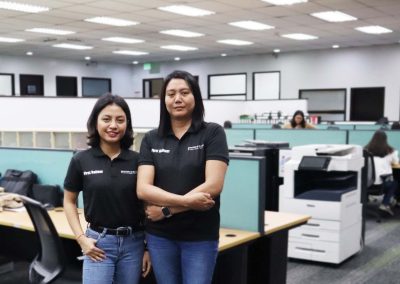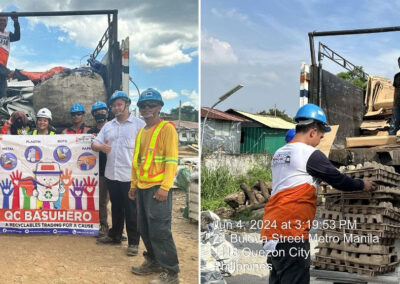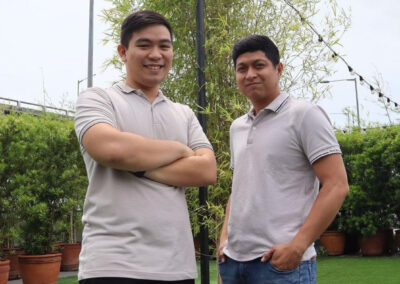Editor’s Note: This issue is the second in a series of articles exploring First Balfour’s sustainability journey in relation to the United Nations Sustainable Development Goals (UN SDGs). Click here to read our first issue on SDG 6. Stay tuned for the succeeding articles about our other Priority SDGs.
Sustainable Development Goal 12, also known as SDG 12, is focused on ensuring sustainable consumption and production patterns. The primary principles of this SDG include the efficient use of resources, reduction of waste and pollution, and development of a circular economy.
The latest SDG report published in July 2022 stated that the globe is increasingly becoming dependent on natural resources. Two regions, East Asia and Southeast Asia and Europe and North America, specifically accounted for as much as 70% of the world’s total domestic material consumption.
Renewable energy, on the other hand, has had good growth over the past years. Over a third (36.1%) of the capacity for energy generation in developing nations comes from renewable sources. Unfortunately, for least developed nations, it would take over 40 years to reach the same amount of development at the present average yearly growth rates.

Climbing a high mountain
According to a 2016 report of the World Economic Forum entitled Shaping the Future of Construction: A Breakthrough in Mindset and Technology, the engineering and construction industry is the world’s largest consumer of raw materials with constructed objects accounting for approximately 25-40% of the world’s total carbon emissions. Although the sector produces an enormous amount of waste, given the industry’s sheer size, even a small improvement would generate substantial benefits.
In First Balfour, one of the biggest changes in recent years was turning away from projects with huge ecological impacts such as the construction of coal-fired power plants. Its parent company First Philippine Holdings (FPH) through Chairman Federico R. Lopez boldly declared in 2016 that it will no longer invest, develop, or manage any coal-fired power plants.
First Balfour Head of TWG for Sustainability Macky de Lima shared, “A sizeable number of our business development prospects then were site development works for coal-fired power plants. With the Group’s new direction, more than PhP 6 Billion worth of prospects were out of the window so we had to pivot towards clean and renewable projects. The financial implications were enormous, but doing what is right and just by putting people and the planet before profit has made us different.”
The company now takes pride in leading sustainability in the local construction industry by maintaining its position as the preferred contractor for renewable power generation projects.
Data-driven process
The company has also been focused on measuring data on resource consumption and waste generation. On a monthly basis, data is collected and analyzed to survey the possible factors and components which affect consumption and production. Three areas are prioritized for this benchmarking process, energy, water, and waste, all of which are vital in determining the course of action for future projects including costing.
In 2021, First Balfour’s total GHG emission was measured at 17,242.19 tons of CO2e. The increase from its 2020 emission data can be attributed to the award of more projects, manpower, and a number of processes that are still dependent on fuel. By the first quarter of 2023, First Balfour aims to set long-term targets from the data collected to achieve net-zero emissions by 2050.
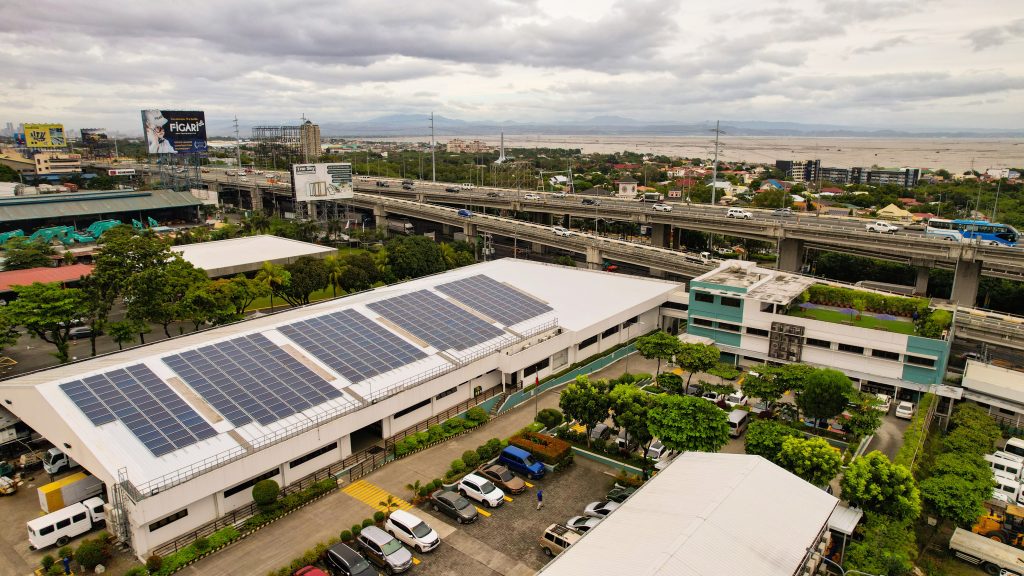
Energy. First Balfour’s head office operations source a portion of its electricity from its 100kWp solar rooftop installation which accounted for 34% of its total consumption in 2022. It also enables the company to export excess energy via net metering. Several measures were also put in place to ensure more efficient methods of heating, cooling, and lighting. These include the installation of LED and motion-sensor lights, window films, and ceiling ventilation.
According to an energy audit conducted by energy efficiency solutions provider Pi Energy, the facility’s Energy Utilization Index (EUI)—the ratio of total annual electricity consumed by the facility divided by the total gross floor area (kwh/sq.m)—is 63.56 kwh/sq.m. This is well within the 98 kwh/sq.m standard for offices and signifies good energy performance.
Moving forward, First Balfour is targeting to install more solar panels at the Head Office which will be enough to cover 100% of its electric consumption. It will also strategize for less energy consumption and replicate these measures across all its project sites. (See: NBAQ4 Shifts to Renewable Energy Source)
Water. In 2016, First Balfour also put up a rainwater harvesting facility with a capacity of 350 cubic meters. This enables the collection and storage of rainwater especially during the wet season (June to October). In the past year, the facility saved up on a total of 40% water use which is equivalent to a 51% decrease in water consumption costs. Correspondingly, by using harvested rainwater for cleaning, toilet flushing, and watering plants, the company is able to mitigate accumulated rainwater to run off that can contribute to flooding in adjacent roads and other low-lying areas.
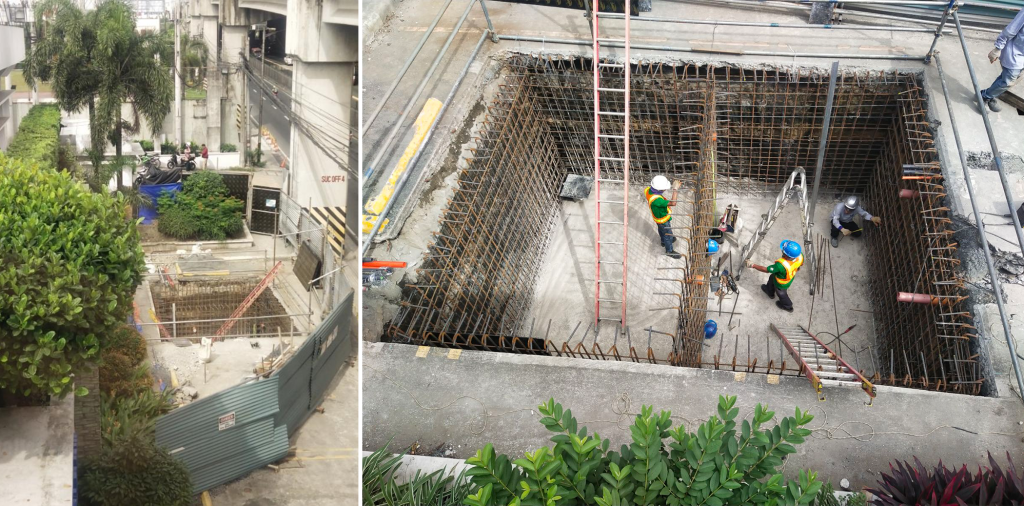
In an aim to treat and recycle wastewater, our Head Office Administration team is also working on a Sewage Treatment Plant (STP) with a capacity of 25 cubic meters per day. The Head Office STP project is targeted for completion by end-January.
Waste. Furthermore, First Balfour aims to annually reduce waste generation by 40% by promoting circular economy practices. Aside from recycling wastes across its project sites, it also recently partnered with a social enterprise for the upcycling of plastic wastes. By end-2022, a total of 668 kilograms of plastic wastes was collected, responsibly segregated, and managed by our partner The Plastic Flamingo. (See: First Balfour signs plastic upcycling initiative with The Plaf).
Electronic waste, or e-waste, is also being managed as dedicated bins have been installed at the Head Office and in bigger projects—a small initiative to counter the increasing e-waste across the globe.

(Photos by Ana Ordiales/Cherrie Tuazon)
Consistent and Collaborative Efforts
Today, while First Balfour already takes the lead in the construction of renewable energy facilities, the company is also finding more ways to minimize costs by promoting value engineering across the core markets it is currently servicing. More adjustments are expected in the following years as data matures and new targets are set. On top of these efforts, First Balfour hopes for cooperation and further collaboration within its supply chain for a better and healthier planet. (See: First Balfour holds Vendors Forum to promote climate neutrality)
SDG 12 (Responsible Consumption and Production) is one of the five Priority SDGs of First Balfour including SDG 5 (Gender Equality), SDG 6 (Clean Water and Sanitation), SDG 8 (Decent Work and Economic Growth), and SDG 9 (Industry, Innovation, and Infrastructure). This and other sustainability strategies are being cascaded across the whole organization in the aim to embed its mission to forge collaborative pathways for a decarbonized and regenerative future.

